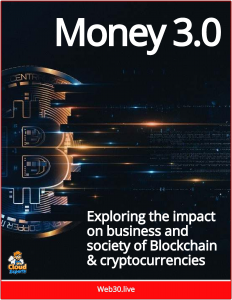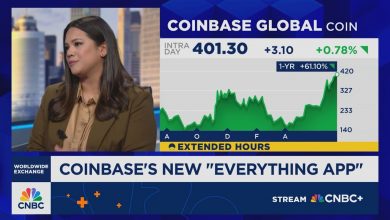Why and How Companies Like JP Morgan And Visa Are Creating Crypto Tokens
Blockchain-based tokens, such as JPMorgan’s JPMD or Visa’s integration of stablecoins, enable near-instant settlements around the clock.
 Companies like JPMorgan and Visa are diving into the creation of cryptocurrency tokens, particularly stablecoins and deposit tokens, to harness blockchain technology for faster, cheaper, and more efficient financial transactions.
Companies like JPMorgan and Visa are diving into the creation of cryptocurrency tokens, particularly stablecoins and deposit tokens, to harness blockchain technology for faster, cheaper, and more efficient financial transactions.
The primary motivation lies in streamlining payment processes that are often slow and costly in traditional systems.
For instance, conventional wire transfers and SWIFT transactions can take days and incur high fees, especially for cross-border payments. Blockchain-based tokens, such as JPMorgan’s JPMD or Visa’s integration of stablecoins, enable near-instant settlements around the clock, significantly reducing costs.
Financial System Modernization
Beyond cost savings, these companies are responding to growing institutional demand and the need to modernize financial systems.
In 2024, merchants paid $187.2 billion in payment processing fees, according to the Nilson Report, underscoring the appeal of low-cost alternatives like stablecoins for payment giants aiming to modernize their infrastructure and stay competitive.
Large corporations require secure, scalable solutions for cross-border payments and asset settlement, and tokens like JPMorgan’s JPMD, built on Coinbase’s Base blockchain, cater specifically to these clients by offering digital representations of bank deposits. The programmability of blockchain, through features like smart contracts, allows for automated and flexible transactions, such as real-time treasury management or multi-party escrow, which enhance efficiency for corporate clients.
Analyst estimates, like Citi’s projection of a $5 trillion tokenized asset market by 2030, highlight the massive potential banks see in this space, driving them to innovate and retain control over financial systems rather than ceding ground to decentralized cryptocurrencies or fintech disruptors.
Jeremy Allaire – Mainstream Adoption of Stablecoin Payments Has Arrived
Blockchain Design
The creation of these tokens involves a strategic blend of private and public blockchain technologies tailored to institutional needs. JPMorgan, for example, initially launched JPM Coin in 2019 on its private Quorum blockchain, processing over $2 billion daily through its Kinexys unit, and has since introduced JPMD on the public Base blockchain for greater scalability. Similarly, Visa leverages its B2B Connect blockchain, while Mastercard’s Multi-Token Network supports stablecoins for institutional settlement.
These platforms ensure compliance with banking regulations, with tokens like JPMD being “permissioned” for vetted clients to meet anti-money laundering standards. Partnerships also play a key role—JPMorgan collaborates with Coinbase and Chainlink, while Visa and JPMorgan linked their blockchains in 2022 to compete with SWIFT, showcasing a commitment to integrating blockchain into existing financial networks.
Regulation Innovation
Recent regulatory developments have further encouraged these efforts. The U.S. Senate’s passage of the GENIUS Act in 2025 provides a clear framework for stablecoins, ensuring consumer protections and reserve requirements, which aligns with banks’ risk management practices. Supportive policy shifts, including the Federal Reserve’s withdrawal of restrictive crypto guidance and a favorable stance from the Trump administration, have created a conducive environment for banks to explore digital assets.
However, critics argue that bank-issued tokens centralize control, clashing with crypto’s decentralized ethos, and concerns linger about regulatory gaps, such as risks of illicit activity. J.P. Morgan’s cautious $500 billion stablecoin market forecast by 2028, compared to others’ $2-4 trillion projections, reflects skepticism about retail adoption, with only 6% of demand currently from non-institutional users.
Despite these challenges, JPMorgan, Visa, and similar firms are forging ahead, using blockchain to reshape payments while balancing innovation with regulatory compliance.



